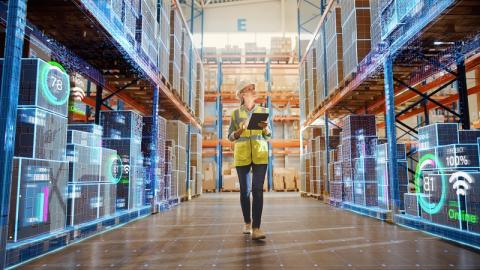How is telecommunication changing?
Categories:
Telecoms
Telecom Networks
Telecoms is a rapidly growing, worldwide industry that constantly needs to adapt to the demands of businesses and consumers. Ian Griffiths, Global R&D VP – Telecoms Business examines some of the biggest factors changing the telecoms landscape.
The telecommunications industry is one of the fastest growing in the world. In recent years, the global market has seen a huge spike in investment growth. The global telecoms market size was valued at just over $1.8bn in 2022 and is expected to grow 6.2% from 2023 to 2030.[1] Although there has been a period of slight decline, the total revenue for the telecoms market in the UK was valued at £31.1bn,[2] making it an incredibly lucrative industry. So, what has been driving this rate of growth and investment?
Key factors driving change in telecoms
Immagine

Arguably, it can be pinned down to a number of factors:
- Covid pandemic
- High demand for FTTH
- Internet of Things (IoT)
- 5G
- Cloud computing
Covid pandemic
The Covid-19 pandemic saw a major shift towards digitalisation. More people had to work remotely, which meant more online collaborations and networking. It also saw a dramatic rise in streaming entertainment, uploading and downloading media – and of course online shopping.
High demand for FTTH
The demands for a more digital way of working and living has resulted in a rush to deploy super-fast optic broadband to homes. The UK is slightly behind countries such as France and Spain who already have a much higher fibre coverage than the UK. This is down to earlier investment in the infrastructure. However, the UK Government has set targets of installing full fibre to 85% of the country by 2025, with the remaining 15% set to be completed by 2030, in order to meet these demands.
Internet of Things
The Internet of Things (IoT) is also playing a huge part in the telecoms industry. An increasing number of physical objects are connecting and exchanging data in real time with other devices over the internet, such as smart meters that help control the temperature of a home. It is predicted that globally, there will be more than 29 billion IoT devices in 2030.[3]
5G
There has also been significant investment in the roll-out of 5G, particularly in the past two years. 5G offers enhanced reliability, capacity and low latency (speed) which is essential for streaming services, downloading files and media etc. 5G is expected to deliver $13.1tn worth of global economic output.[4]
Cloud computing
With remote working still booming, more and more businesses are shifting to the cloud. The cloud allows data to be stored on the internet instead of a remote server. This allows workers to easily access files, platforms and much more from anywhere around the world.
What are the challenges facing telecoms?
Immagine

The impact of the pandemic also presents a challenge. While it has created a shift to a more digital way of working, telecom providers need to have the right products and solutions in place to provide a fast, reliable connectivity for customers.
The future of telecommunications
With the ever-increasing demands for global IP traffic, comes a dramatic increase in the number of fibre optic installations, which can be costly in terms of digging the ground to lay cables and install new ducts etc. This boom in demand for super-fast broadband is driving densification. This is the process of making cables as small as possible in order to utilise already congested network space such as ducts.
Densification leads to a lower Total Cost of Ownership (TCO) and helps the customer deploy a more sustainable optical network. Advanced microduct cables are just one solution that allows faster installation and results in a significant cost reduction in civil work and soil reclaiming and processing.
Prysmian has developed miniaturised cables that can be up to 50 per cent smaller and 70 per cent lighter than traditional loose tube cables. The Sirocco cable range offers world record cable diameters and fibre densities benefiting both the TCO and the carbon footprint.
Immagine

Sirocco Extreme
Another solution, The Karona Overblow System, enables the installation of a high-density optical cable into a pre-existing sub-ducted route already containing a legacy cable. Its benefits include the cost elimination of Civil’s works, speedier installation and huge reduction in the carbon footprint – usually in excess of 25 tonnes of CO2 per km.
The telecoms industry is expected to accelerate in the next ten years and it is vital that service providers and telecom cable manufacturers offer and develop solutions to aid a digitally evolving world.
What products and solutions do Prysmian Group offer to drive the telecoms industry forward? Find out more in our next blog…
Prysmian Telecoms: Linking the future
Prysmian Group is helping to link communities, continents and countries faster and more efficiently than ever before.
Our global presence, combined with our experts’ regional knowledge, means we’re uniquely placed to support the needs of every customer: from manufacturing high-performance and cost-effective data cables within tight lead times, to offering specialised network solutions which enable high-speed connectivity in the core network, within datacentres, or at the edge. And of course, our optical fibre technology sets us apart from our competitors.
Learn more about Prysmian Telecom solutions and discover the full project range.



